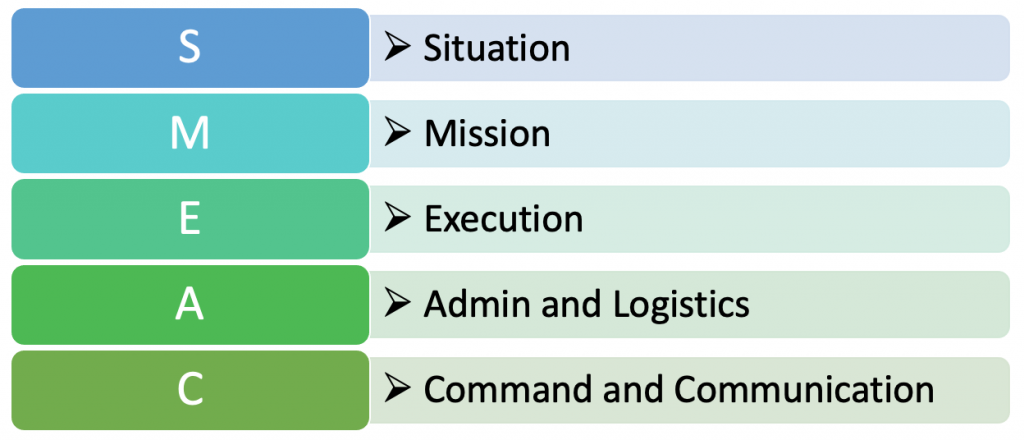In our article on the Planning Process, we provided a planning model based on the Military Appreciation Process (MAP). The MAP is a powerful tool that can help leaders develop detailed and complex plans to address new initiatives or solve “Wicked Problems“.
There will be times though when the time needed to properly research and develop a detailed plan is just not available. Your staff or those you work for will expect you to be able to quickly develop a plan of action to address an impending need. You need a systematic, simple, and effective way to quickly develop a robust plan and you need to be able to quickly brief your staff and executives in an effective, professional, and convincing manner.
This article provides a process for developing effective, consistent Immediate Action Plans (IAP) and is based on the military’s Situation, Mission, Execution, Admin & Logistics, and Command & Signals (Communication) or SMEAC for short.
SMEAC can be used in two main ways. It can be used to develop plans that are tested and rehearsed and kept at the ready to be implemented when a certain condition or set of conditions reveal themselves. It can also be used with great effect by leaders who need to quickly formulate a plan and be able to brief that plan up or down the chain of command.

Unpacking S.M.E.A.C.
Situation: Determine the issue or problem that needs to be solved. Gather assumptions. Determine any freedoms of action or constraints. Identify Why the plan needs to be developed and executed.
Mission: This is a mission statement that is written following the format; Who, What, Where, How, and by When. A military mission statement does not include the Why, however, it is important to explain the Why as part of the Situation brief.
Execution: This is where you develop the detail about how the plan will be implemented. In the military, the execution is often rehearsed.
Admin & Logistics: Identify, document, and brief your personnel on any administrative and logistic factors needed to support the execution of the plan.
Command & Communication: Understand the commanders intent 1Up & 2Up. Establish the ‘Chain of Command’ and assign authority. Determine and define who the stakeholders are, what information they need to be provided, who needs to provide it, and in what format, how frequently it needs to be provided, and over what means.
This simple process is used by junior and senior commanders to plan and execute military missions and can be adapted to help new and experienced business leaders by providing a quick, deliberate, robust, repeatable, and memorable method for developing Immediate Action Plans.
